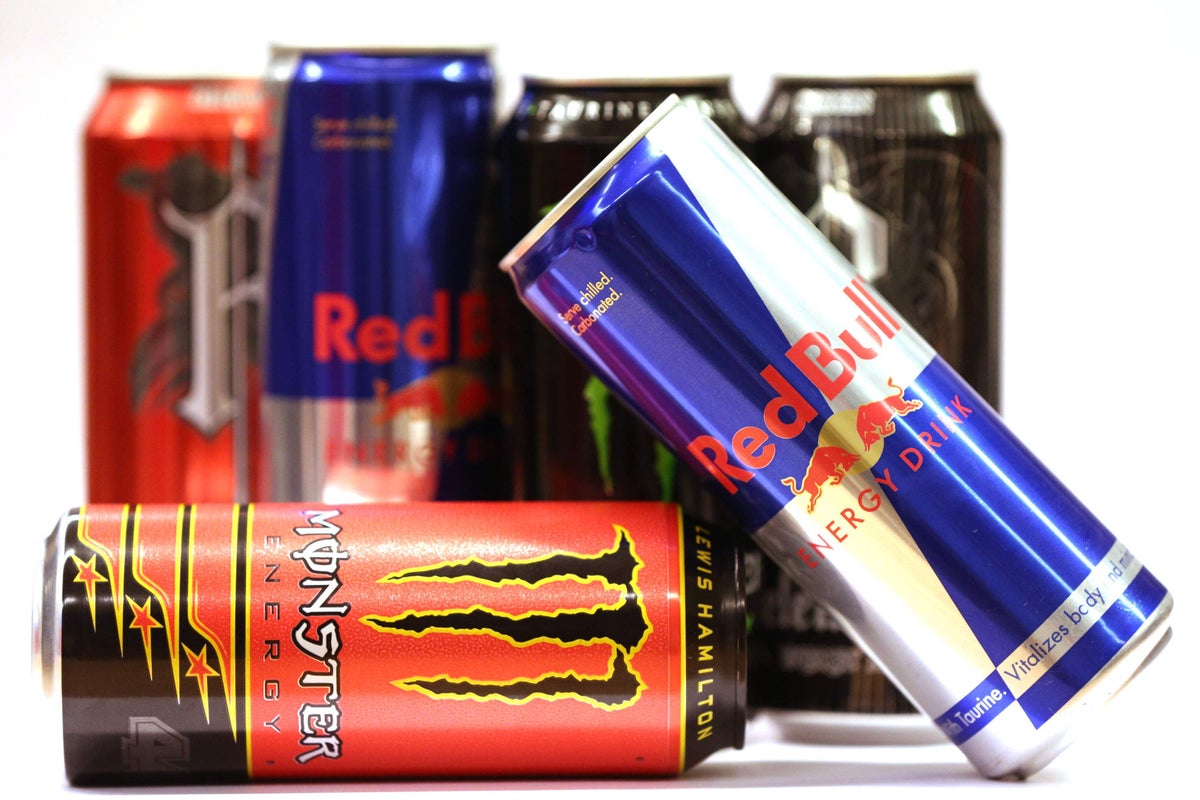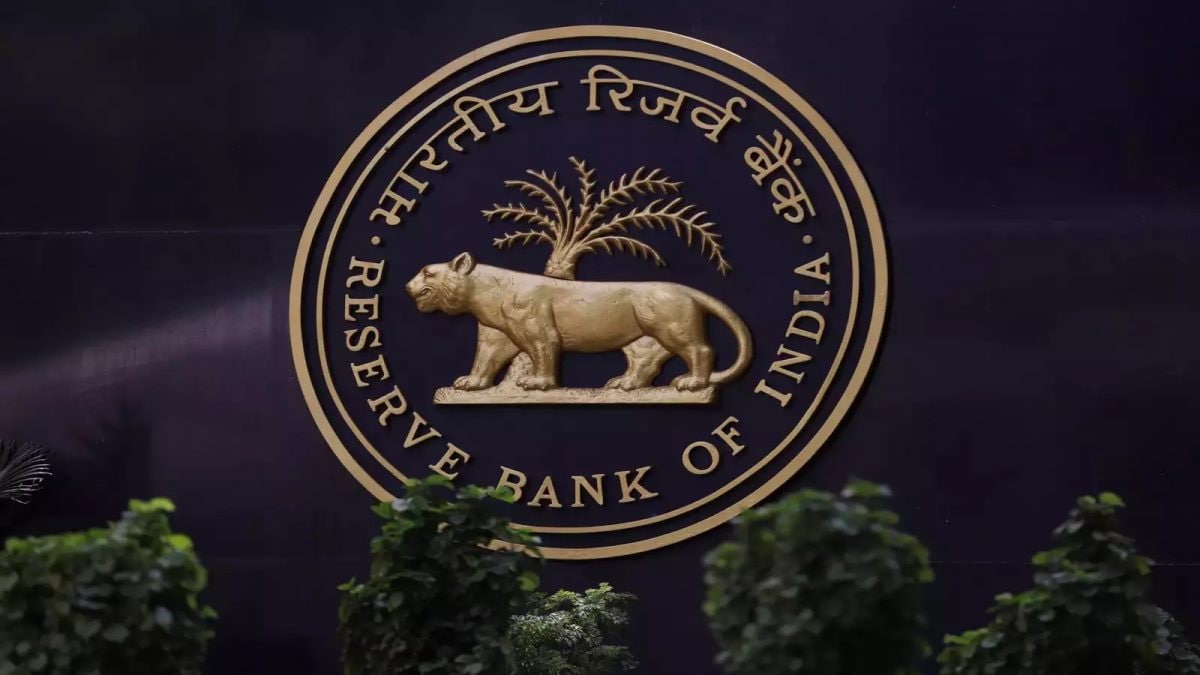Business
High-caffeine energy drinks to be banned for under-16s in England – Streeting

High-caffeine energy drinks will be banned for under-16s in England to prevent harm to children’s health, the Government has said.
The plan will make it illegal to sell energy drinks containing more than 150mg of caffeine per litre to anyone under 16 across all retailers, including online, in shops, restaurants, cafes and vending machines.
Lower-caffeine soft drinks – such as Coca‑Cola, Coca‑Cola Zero, Diet Coke and Pepsi – are not affected, and neither are tea and coffee.
However, high-caffeine energy drinks such as Red Bull, Monster, Relentless and Prime would all breach the limit.
Major supermarkets including Tesco, Sainsbury’s, Waitrose, Morrisons and Asda have already stopped sales of the drinks to youngsters, but the Department of Health said research suggests some smaller convenience stores are still selling them to children.
According to ministers, a ban could prevent obesity in up to 40,000 children and will help prevent issues such as disrupted sleep, increased anxiety and lack of concentration, as well as poorer school results.
Around 100,000 children are thought to consume at least one high-caffeine energy drink every day.
Health and Social Care Secretary Wes Streeting said: “How can we expect children to do well at school if they have the equivalent of a double espresso in their system on a daily basis?
“Energy drinks might seem harmless, but the sleep, concentration and wellbeing of today’s kids are all being impacted while high sugar versions damage their teeth and contribute to obesity.
“As part of our plan for change and shift from treatment to prevention, we’re acting on the concerns of parents and teachers and tackling the root causes of poor health and educational attainment head on.
“By preventing shops from selling these drinks to kids, we’re helping build the foundations for healthier and happier generations to come.”
A newly-launched consultation will now run for 12 weeks to gather evidence from experts in health and education as well as retailers, manufacturers, local enforcement leaders and the public.
Drinks containing more than 150mg of caffeine per litre must already carry warning labels stating they are not recommended for children.
Gavin Partington, director general of the British Soft Drinks Association, said firms do not market or promote the drinks to under-16s.
He added: “Our members have led the way in self-regulation through our long-standing energy drinks code of practice.
“Our members do not market or promote the sale of energy drinks to under-16s and label all high-caffeine beverages as ‘not recommended for children’, in line with and in the spirit of this code.
“As with all Government policy, it’s essential that any forthcoming regulation is based on a rigorous assessment of the evidence that’s available.”
According to the Department of Health, up to one in three children aged 13 to 16, and nearly a quarter of children aged 11 to 12, consume one or more high-caffeine energy drink every week.
Education Secretary Bridget Phillipson said: “This Government inherited a scourge of poor classroom behaviour that undermines the learning of too many children – partly driven by the harmful effects of caffeine-loaded drinks – and today’s announcement is another step forward in addressing that legacy.”
Professor Steve Turner, president of the Royal College of Paediatrics and Child Health, said: “Paediatricians are very clear that children or teenagers do not need energy drinks.
“Young people get their energy from sleep, a healthy balanced diet, regular exercise and meaningful connection with family and friends.
“There’s no evidence that caffeine or other stimulants in these products offer any nutritional or developmental benefit, in fact growing research points to serious risks for behaviour and mental health.
“Banning the sale of these products to under-16s is the next logical step in making the diet of our nation’s children more healthy.”
Carrera, from the youth-led group Bite Back, which campaigns for changes to the way unhealthy foods are made, marketed and sold, said: “Energy drinks have become the social currency of the playground – cheap, brightly packaged, and easier to buy than water.
“They’re aggressively marketed to us, especially online, despite serious health risks.
“We feel pressured to drink them, especially during exam season, when stress is high and healthier options are hard to find.
“This ban is a step in the right direction, but bold action on marketing and access must follow.”
Amelia Lake, professor of public health nutrition at Teesside University, said: “Our research has shown the significant mental and physical health consequences of children drinking energy drinks.
“We have reviewed evidence from around the world and have shown that these drinks have no place in the diets of children.”
Barbara Crowther, of the Children’s Food Campaign at Sustain, an alliance of food, farming and health organisations, said the drinks were “branded and marketed to appeal to young people through sports and influencers, and far too easily purchased by children in shops, cafes and vending machines”.
Professor Tracy Daszkiewicz, president of the Faculty of Public Health, said: “Mounting evidence shows us that high-caffeine energy drinks are damaging the health of children across the UK, particularly those from deprived communities who are already at higher risk of obesity and other health issues.
“We welcome this public health intervention to limit access to these drinks and help support the physical and mental wellbeing of our young people.”
James Lowman, chief executive of the Association of Convenience Stores, said: “The majority of convenience stores already have a voluntary age restriction in place on energy drinks, and will welcome the clarity of regulation on this issue.
“Our members have a long-standing track record of enforcing age restricted sales on different products, but it is essential that the Government effectively communicates the details of the ban to consumers to avoid the risk of confrontation in stores.”
Business
IndiGo Faces Massive Flight Cancellations: Can Travel Insurance Save Stranded Flyers?

Last Updated:
IndiGo faces massive flight cancellations despite DGCA rollback, affecting thousands. Experts like advise on travel insurance claims and proper documentation.
ndiGo Disruption Intensifies: What Travel Insurance Covers During Flight Chaos
There seems to be no end to the mayhem of IndiGo’s operational meltdown as hundreds of flights have been cancelled on Saturday. The chaos has continued despite the Directorate General of Civil Aviation (DGCA) rolling back the Flight Duty Time Limitations orders, which were the lead cause to disrupt the capability of carriers to maintain regular operation.
Thousands of passengers, from students to senior citizens to professionals, have been affected in the past few days during the flight cancellations, disrupting their plans and schedules. Along with that, they have to face monetary losses too.
Travel insurance is one such option that travelers can use while facing this kind of situation. Not many of people in India are aware of how a travel insurance works and whether all plans cover flight cancellation costs.
Meet Kapadia, Head of Travel Insurance at Policybazaar.com said that travel Insurance offers fixed pay outs if the traveller is stranded for a specified number of hours (6–12 hours).
“They also reimburse the cost if the flight is cancelled and traveller has to book a new flight, or arrange hotel stay, cover meals, essentials, and other emergency purchase,” Kapadia added.
Customers, however, should know that a very low-priced/ basic product of travel insurance may not pay for non-medical losses from an airline operational cancellation unless that benefit is purchased, according to Chetan Vasudeva, Senior Vice President – Business Development at Elephant.in, Alliance Insurance Brokers.
“No – basic plans may not fully cover losses from airline operational problems unless the policy explicitly includes or has an option for trip cancellation / carrier cancellation, trip interruption, missed-connection or trip-delay benefits,” Vasudeva added.
He further told that many standard travel policies include only basic medical, baggage and emergency assistance by default. “If you want protection specifically against airline operational issues, check for carrier cancellation/trip cancellation/missed-connection or buy a cancel-for-any-reason add-on cover.”
Beyond the financial safety net , the insurer also provides 24×7 assistance and emergency support to help passengers manage disruption with less stress in unfamiliar locations.
What Should Customers Need To Do To Get Claims?
The first 24 hours after a flight cancellation are crucial for building a strong claim file.
The policyholder should immediately need to obtain written proof from the airline such as an email, SMS, or a formal flight disruption certificate, that clearly state the due cause and timing of the cancellation, explained Vasudeva. “At the same time, this is when policyholder should inform their insurance provider’s helpline immediately after the disruption; quick intimation is often listed as a mandatory requirement in most policies,” he added.
During this period, every incidental expense such as food, hotel stays, transport, or rebooking, should be supported with itemized receipts and payment proofs. If the airline offers alternative arrangements like meal vouchers or free accommodation, passengers need to preserve those records as well, because insurers cross-verify what has already been compensated.
Careful documentation in the first 24 hours substantially reduces the chances of queries, delays, or rejection during the processing of claims, Vasudeva stated.
December 06, 2025, 13:56 IST
Read More
Business
After 25 Bps Cut, India At 5.25%: How Policy Rates Compare Across BRICS, US And Other Economies

Last Updated:
At 5.25%, India’s policy rate is higher than the US, UK and Eurozone but far below Brazil and Russia, which still run double-digit rates to fight inflation pressures.
RBI cuts repo rate by 25 bps to 5.25 per cent
India’s Central bank has shifted gears to support the economic momentum and ease lending with a rate cut of 25 basis points in the latest Monetary Policy Committee (MPC) meeting between December 3 to 5. The latest lending benchmark – repo rate – stood at 5.25 per cent after Friday’s 25 bps cut from 5.50 per cent.
The Reserve Bank of India (RBI) governor, Sanjay Malhotra, in his speech on Friday, termed the current economic situation as ‘rare goldilocks period’, stating that inflation is at a benign 2.2 per cent and growth at 8.0 per cent in H1:2025-26.
The standing deposit facility (SDF) rate under the liquidity adjustment facility (LAF) now adjusted to 5.00 per cent and the marginal standing facility (MSF) rate and the Bank Rate to 5.50 per cent. The MPC also decided to continue with the neutral stance.
The repo rate is the interest rate at which banks borrow money from the RBI. When banks face a shortage of cash, they borrow from the RBI by pledging government bonds. The interest the RBI charges on this borrowing is known as the repo rate. If the RBI raises the repo rate, borrowing becomes costlier for banks. If it lowers the rate, banks can access funds more cheaply.
The policy rate is a critical monetary tool utilised by the banks to control money flow into the economy. The Central banks of different countries seek to strike a balance to keep the economic growth momentum and stop inflation from getting out of control.
Comparison of Different Policy Rates As Of Now In Major Economies:
| Country | Interest Rate (Policy Rate) |
| United States | 4.00 % |
| United Kingdom | 4.00 % |
| Eurozone (ECB) | 2.15 % |
| India (RBI) | 5.25 % |
| Japan (BoJ) | 0.50 % |
| Australia (RBA) | 3.60 % |
| Canada (BoC) | 2.25 % |
| China (PBoC) | 3.00 % |
| Brazil (BCB) | 15.00 % |
| Russia (CBR) | 16.50 % |
India’s policy rate stood in align with the developed economies such as USA and UK, while a way too below in comparison to BRICS countries. For instance, Brazil and Russia’s policy rates are in the double digit – 15% and 16.50% respectively, due to run away inflation.
December 06, 2025, 09:34 IST
Read More
Business
Petrol, Diesel Fresh Prices Announced: Check Rates In Your City On December 6

Last Updated:
On December 6, 2025, OMCs updated petrol and diesel prices across cities like New Delhi, Mumbai, and Chennai, reflecting global crude oil trends, taxes, and currency rates.

Petrol, Diesel Prices On December 6
Petrol and Diesel Prices on December 6, 2025: OMCs update petrol and diesel prices daily at 6 AM, aligning them with fluctuations in global crude oil prices and currency exchange rates. This daily revision promotes transparency and ensures consumers have access to the most up-to-date and accurate fuel prices.
Petrol Diesel Price Today In India
Check city-wise petrol and diesel prices on December 6:
| City | Petrol (₹/L) | Diesel (₹/L) |
|---|---|---|
| New Delhi | 94.72 | 87.62 |
| Mumbai | 104.21 | 92.15 |
| Kolkata | 103.94 | 90.76 |
| Chennai | 100.75 | 92.34 |
| Ahmedabad | 94.49 | 90.17 |
| Bengaluru | 102.92 | 89.02 |
| Hyderabad | 107.46 | 95.70 |
| Jaipur | 104.72 | 90.21 |
| Lucknow | 94.69 | 87.80 |
| Pune | 104.04 | 90.57 |
| Chandigarh | 94.30 | 82.45 |
| Indore | 106.48 | 91.88 |
| Patna | 105.58 | 93.80 |
| Surat | 95.00 | 89.00 |
| Nashik | 95.50 | 89.50 |
Key Factors Behind Petrol and Diesel Rates
Petrol and diesel prices in India have remained unchanged since May 2022, following tax reductions by the central and several state governments.
Oil Marketing Companies (OMCs) update fuel prices daily at 6 am, adjusting for fluctuations in global crude oil markets. While these rates are technically market-linked, they are also influenced by regulatory measures such as excise duties, base pricing frameworks, and informal price caps.
Key Factors Influencing Fuel Prices in India
-
Crude Oil Prices: Global crude oil prices are a primary driver of fuel prices, as crude is the main input in petrol and diesel production.
-
Exchange Rate: Since India relies heavily on crude oil imports, the value of the Indian rupee against the US dollar significantly affects fuel costs. A weaker rupee typically translates to higher prices.
-
Taxes: Central and state-level taxes constitute a major portion of retail fuel prices. Tax rates vary across states, leading to regional price differences.
-
Refining Costs: The cost of processing crude oil into usable fuel impacts retail prices. These costs can fluctuate depending on crude quality and refinery efficiency.
-
Demand-Supply Dynamics: Market demand also influences fuel pricing. Higher demand can push prices up as supply adjusts to consumption trends.
How to Check Petrol and Diesel Prices via SMS
You can easily check the latest petrol and diesel prices in your city through SMS. For Indian Oil customers, text the city code followed by “RSP” to 9224992249. BPCL customers can send “RSP” to 9223112222, and HPCL customers can text “HP Price” to 9222201122 to receive the current fuel prices.
December 06, 2025, 07:47 IST
Read More
-

 Tech6 days ago
Tech6 days agoGet Your Steps In From Your Home Office With This Walking Pad—On Sale This Week
-

 Sports5 days ago
Sports5 days agoIndia Triumphs Over South Africa in First ODI Thanks to Kohli’s Heroics – SUCH TV
-

 Entertainment5 days ago
Entertainment5 days agoSadie Sink talks about the future of Max in ‘Stranger Things’
-

 Fashion5 days ago
Fashion5 days agoResults are in: US Black Friday store visits down, e-visits up, apparel shines
-

 Politics5 days ago
Politics5 days agoElon Musk reveals partner’s half-Indian roots, son’s middle name ‘Sekhar’
-

 Tech5 days ago
Tech5 days agoPrague’s City Center Sparkles, Buzzes, and Burns at the Signal Festival
-

 Sports5 days ago
Sports5 days agoBroncos secure thrilling OT victory over Commanders behind clutch performances
-

 Entertainment5 days ago
Entertainment5 days agoNatalia Dyer explains Nancy Wheeler’s key blunder in Stranger Things 5





